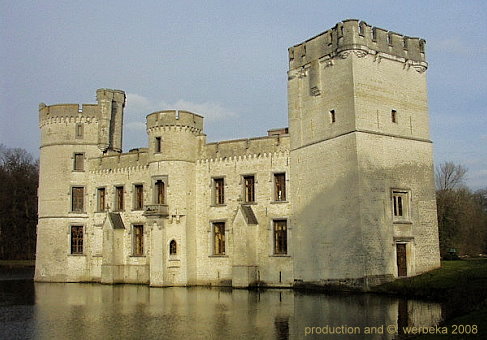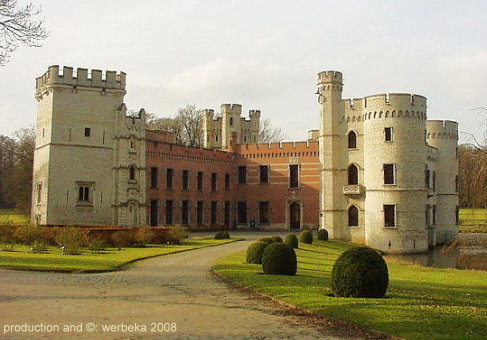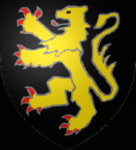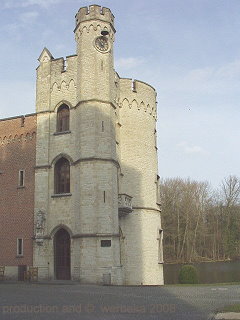
BOUCHOUT CASTLEThe National Botanic Garden of Belgium is situated in Meise, a couple of kilometers to the north of Brussels. The government purchased the area in 1938 from the royal family, in order to found the garden. What many people don't know, is that there are not only flowers and trees to be seen, but even a witness of early history - the Bouchout Castle.
 We have to go back not less than 900 years, to experience the foundation of this fortification. It is often said that it was the Duke of Brabant, who met local resistance here, in the form of vigilantes from Meise. This is impossible, as Brabant at that time was under the rule of a landgrave. Godfrey II, Count of Leuven, was also Duke of Lower Lorraine and Landgrave of Brabant during the first part of the 12th century, when there were unrests among the population. The result thereof were two strongholds, the Castles of Bouchout and that of Meise, not very far away from the former. The latter, however, was burnt down totally during World War II.
The first Duke of Brabant was Henry I, even called The Courageous. He was promoted in 1183 or 1184 from landgrave to duke. He had been duke before, though - of Lower Lorraine, as was his father, Godfrey III. His mother was Margaret of Limburg. If one considers that Henry was born in 1165 in Leuven, he was thus honoured already at the age of 18 or 19. He died in 1235 in Cologne.
But all of this happened before any part of today's castle was built. Its oldest part is the quadrangular tower, which remains from the 14th century. But on the other hand, the most important time for the fortfications had passed already, as the 15th century was to be the end of chivalry and knight's castles. Even concerning the Botanic Garden a Hapsburg was envolved. In early times it was the Catholic University at Leuven, which was in charge of the garden. But Emperor Joseph II decided in 1788 to move the university to Brussels. And even if planned, the botanic garden never was relocated.

The castle bot its appearance of today in 1830, when the Count of Beauffort restaurated it. In 1879 the family sold the property to King Leopold II, when the castle in Tervuren burnt down. That had been the residence of Charlotte of Belgium, even if she was in mental derangement. She became insane in 1867, when her spouse, Maximilian of Habsburg (brother of Emperor Francis Joseph in Austria), was deposed as Emperor of Mexico and executed. The castle deteriorated after the death of the Empress, but was thoroughly restored in the eighties of the last century, even if important details as floors, doors and ceiling decorations were left in original style. Today it is sometimes used for conferences, exhibitions, etc. The rest of the time the castle's inner domains are not available to the public.
|
 The coat of arms of the Dukes of Brabant. The Brabantian Lion today is still seen in the coat of arms of Belgium, as the fight for independency started in Brabant.
The coat of arms of the Dukes of Brabant. The Brabantian Lion today is still seen in the coat of arms of Belgium, as the fight for independency started in Brabant. Now Charlotte's brother merged the properties of Meise and Bouchout, in order to provide the widow with a new home. She lived there until her death in 1927.
Now Charlotte's brother merged the properties of Meise and Bouchout, in order to provide the widow with a new home. She lived there until her death in 1927.
